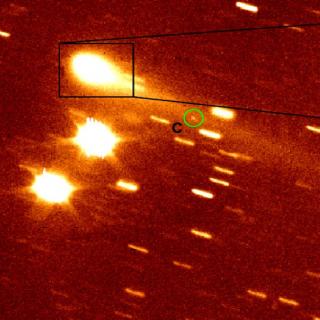Bibcode
DellaGiustina, D. N.; Burke, K. N.; Walsh, K. J.; Smith, P. H.; Golish, D. R.; Bierhaus, E. B.; Ballouz, R. -L.; Becker, T. L.; Campins, H.; Tatsumi, E.; Yumoto, K.; Sugita, S.; Deshapriya, J. D. Prasanna; Cloutis, E. A.; Clark, B. E.; Hendrix, A. R.; Sen, A.; Al Asad, M. M.; Daly, M. G.; Applin, D. M.; Avdellidou, C.; Barucci, M. A.; Becker, K. J.; Bennett, C. A.; Bottke, W. F.; Brodbeck, J. I.; Connolly, H. C.; Delbo, M.; de Leon, J.; Drouet d'Aubigny, C. Y.; Edmundson, K. L.; Fornasier, S.; Hamilton, V. E.; Hasselmann, P. H.; Hergenrother, C. W.; Howell, E. S.; Jawin, E. R.; Kaplan, H. H.; Le Corre, L.; Lim, L. F.; Li, J. Y.; Michel, P.; Molaro, J. L.; Nolan, M. C.; Nolau, J.; Pajola, M.; Parkinson, A.; Popescu, M.; Porter, N. A.; Rizk, B.; Rizos, J. L.; Ryan, A. J.; Rozitis, B.; Shultz, N. K.; Simon, A. A.; Trang, D.; Van Auken, R. B.; Wolner, C. W. V.; Lauretta, D. S.
Bibliographical reference
Science
Advertised on:
11
2020
Journal
Citations
99
Refereed citations
97
Description
Visible-wavelength color and reflectance provide information about the geologic history of planetary surfaces. Here we present multispectral images (0.44 to 0.89 micrometers) of near-Earth asteroid (101955) Bennu. The surface has variable colors overlain on a moderately blue global terrain. Two primary boulder types are distinguishable by their reflectance and texture. Space weathering of Bennu surface materials does not simply progress from red to blue (or vice versa). Instead, freshly exposed, redder surfaces initially brighten in the near-ultraviolet region (i.e., become bluer at shorter wavelengths), then brighten in the visible to near-infrared region, leading to Bennu’s moderately blue average color. Craters indicate that the time scale of these color changes is ~105 years. We attribute the reflectance and color variation to a combination of primordial heterogeneity and varying exposure ages.
Related projects

Small Bodies of the Solar System
This project studies the physical and compositional properties of the so-called minor bodies of the Solar System, that includes asteroids, icy objects, and comets. Of special interest are the trans-neptunian objects (TNOs), including those considered the most distant objects detected so far (Extreme-TNOs or ETNOs); the comets and the comet-asteroid
Julia de
León Cruz